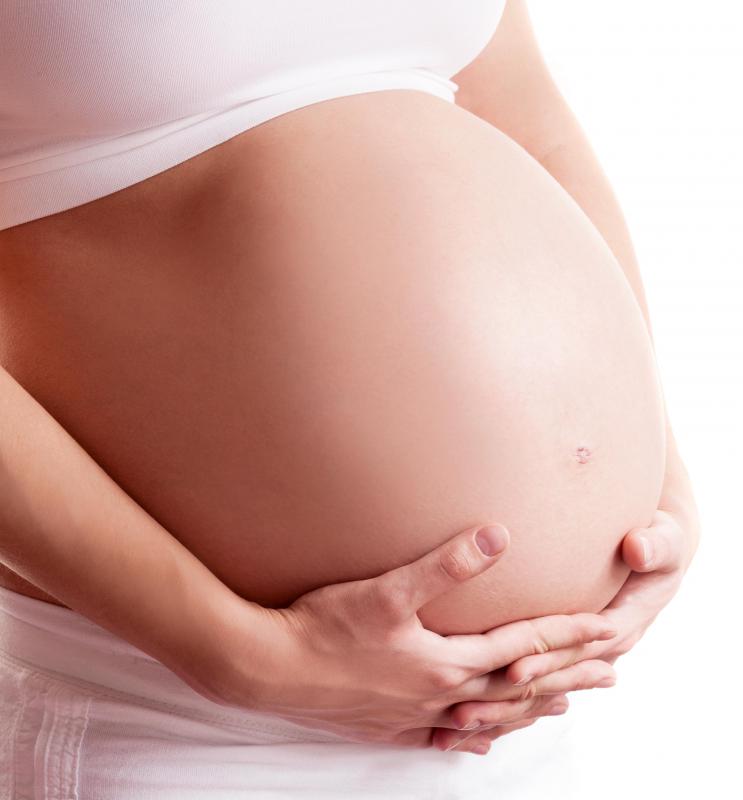At TheHealthBoard, we're committed to delivering accurate, trustworthy information. Our expert-authored content is rigorously fact-checked and sourced from credible authorities. Discover how we uphold the highest standards in providing you with reliable knowledge.
What Happens to the Uterus During Pregnancy?
Many changes happen to the uterus during pregnancy. It gets much larger to accommodate the growing fetus; it may cause menstrual-like cramps; and, on very rare occasions, the uterus may rupture or noticeably bleed. In most cases, the uterus returns to its normal state once the pregnancy is over.
The first change in the uterus happens when the egg is implanted in the first week. The implantation itself is not noticeable, but is generally accompanied by slight bleeding five to 10 days afterward. The amount of blood is so slight that most women do not notice it.

Pregnancy cramps are another common symptom. The feeling is similar to menstrual cramps, and is caused by the uterus' expansion to accommodate the growing fetus inside. Sharper, but similar, aches may be attributed to round ligament pain. The uterus is held in place by ligaments that must stretch to help stabilize the growing uterus during pregnancy. This stretching can cause temporary pain, especially with sudden movements.

Over the course of nine months, the uterus will grow from about 2.5 ounces (71 g) to approximately two pounds (.91 kg). By the end of the pregnancy, a woman's uterus will extend from her pelvis to the bottom of her ribcage. It will weigh 15 times more than before pregnancy — not including the fetus — and can hold 500 times more than it did prior to conception. The larger uterus is one of the reasons many women often have the urge to urinate frequently during pregnancy, since the larger uterus presses down on the bladder while simultaneously suppressing its capacity.

Rarely, a uterine rupture can occur during pregnancy, usually during early labor. This most commonly happens through the incision from a previous Caesarean section, which is why many doctors recommend that a woman who has had a C-section should have subsequent babies the same way. A rupture can be life-threatening to both the mother and the baby. It can also result in the need for a hysterectomy.

All changes that happen to the uterus during pregnancy should fade within about six weeks of giving birth. Contractions after the birth cause the uterus to shrink back down to its normal size in a process called involution of the uterus. Pains associated with these contractions are called afterpains, and feel like cramps.
A week after birth, the uterus should be down to about a pound (.45 kg). After two weeks, it will weigh roughly 11 ounces (311 g). By four to six weeks following delivery, the uterus should have returned to its pre-pregnancy weight.
AS FEATURED ON:
AS FEATURED ON:
















Discussion Comments
I remember being warned about post-pregnancy uterine contractions, especially because I was nursing, but nothing prepared me for what I felt. The pain was so intense (and I’m no whiner) that I told the nurse I was sure I was having another baby. I made them check me to make sure I wasn’t in labor again. Thank goodness for pain medication.
The way the uterus changes during pregnancy is nothing short of a miracle. There is nothing more astonishing to me than how a woman's body changes and grows to accommodate and create new life. Women are amazing.
I developed a grade two prolapsed uterus during my pregnancy. Uterine prolapse is when the uterus literally starts to fall into the vagina because the ligaments that hold it in place fail. When I was first diagnosed, I was told to do Kegel exercises. Not easy to do when carrying two little growing watermelons! By the time my twins were born, I had a grade three prolapse, that required surgery.
Fortunately, everything is reattached and back where it should be.
Post your comments